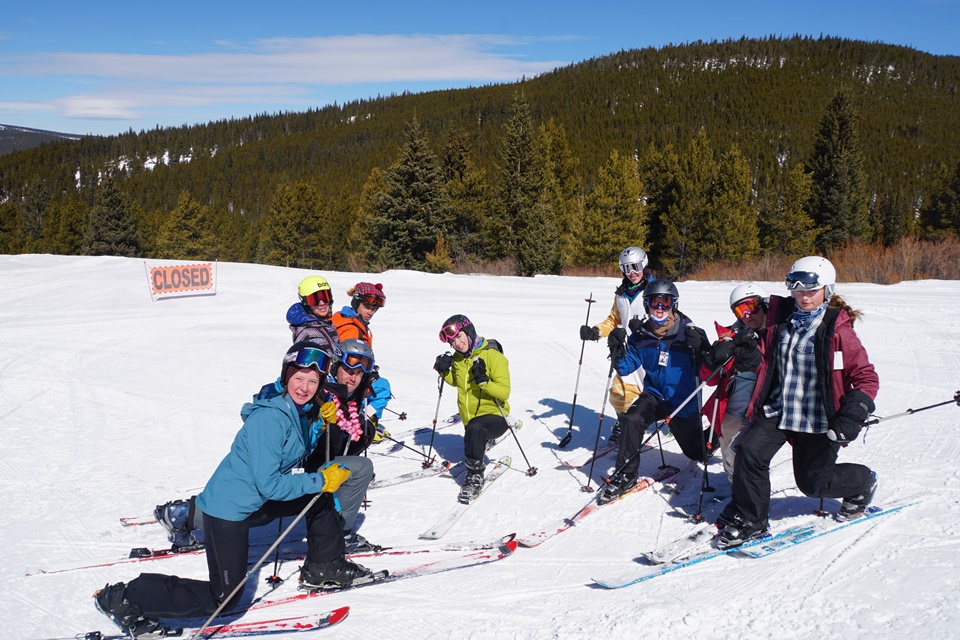Semester 40: Creating new traditions and slowing down
This week we wrapped up our first two major essays in English and history, and we had a debate on animal rights in Practices & Principles, our ethics class. For one of our essays we analyzed Terry Tempest Williams’s use of literary devices in Red, a collection of short stories which paid homage to the deserts of Utah. It brought so much depth to our first expedition in the canyons to read about someone else’s appreciation for the same landscape we were exploring. In one of the essays, Ode to Slowness, Williams tells the story of how she and her husband moved from Salt Lake City to the remote desert, and how it taught her to appreciate a slow life: unscheduled days, breathing, simply watching nature, and a disregard for time. Many of us here are from urban areas, and we were able to connect to Williams’s experience of feeling overwhelmed by a city. Now that we’re in picturesque Leadville, some of us have been trying to implement her practice of taking moments to slow down despite our very scheduled lives here at HMI.
Our history essay was a response to the prompt “Americans love to talk about freedom, but what does it actually mean to be free?” America is supposedly the “land of the free,” so it is important to think about what we mean when we say that, and what we want to achieve when we strive for freedom. It is also impossible to define freedom precisely, so we looked to what the historians we have read think about freedom. For example, in analyzing Howard Zinn’s and Paulo Freire’s arguments about freedom, some students came to the conclusion that both argued that people are free when they are encouraged to think freely: to analyze the many biased narratives given to them and formulate their own opinions. Freire’s Pedagogy of the Oppressed was actually one of the first things we read here, and it was refreshing to be handed an argument that fosters a culture of challenging our history teacher, each other, and ourselves.
We have been reading about animal rights and land ethics for two weeks in P&P, and we recently had a mock-debate about whether the U.S. should ban animal husbandry by 2030. We had a heated debate surrounding the ethics of killing animals, the economic impacts of America’s going vegetarian, and the environmental implications. Many students were surprised to learn that, although cows produce methane and use up a lot of land, if the world went vegetarian it could possibly be worse for the environment for a number of reasons. In the end, we argued our points so well that some students considered going vegetarian, and some felt convinced they should remain omnivores. As always, it was a rigorous but productive academic week at HMI.
As a community, we have been creating new traditions, unique to Semester 40, and adopting old ones, established semesters before us. After every study hall, all the students have a big dance party in Who’s Hall, until we have to go to bed. Whether we are screaming the words to Mama Mia, or jumping up and down to Hey Ya!, it is always a great way de-stress and connect with the community after a long day. Back in Cabin Two, all of us love to sit around the fire at night, telling stories about our lives back at home, and answering Circle questions we think of earlier that day. We can always go to our cabin when we need advice. Every time it snows, which is pretty often, the HMI “swim team” has practice on Who’s Hall porch. Practice consists of students diving into powder to swim a few strokes, although the main point is simply to have fun outside. During lunch, sometimes clubs hold meetings: Queer Affinity, a safe space for students to talk about sexual identity, and Avatar the Last Airbender club, where students passionately discuss how the show is ahead of its time. The whiteboards in Who’s hall are always littered with surveys, such as “is cereal a soup?” or is it “a pack of gum” or a “packet of gum”? These always lead to heated debates during meals or free time. Even with a big essay or lab report due the next morning, at HMI the community is always high energy, squeezing in time to be kids whenever possible.
 Last week was ski week, so on Friday, Sunday, Tuesday, and Thursday everyone went to the local ski slope, Ski Cooper, for a few hours in the morning. Our goal: learn to telemark ski by the end of ski week. After all, on Wednesday we’ll be backcountry skiing in the Sawatch and Mosquito Mountains for our second expedition. Friday, our first day of ski week, was all about getting skis attached to boots and feeling the difference between what most of us were used to: standard alpine skis, and what we were trying: telemark skis. The thing about tele skis is that the heel of the boot isn’t attached to the bottom of ski, which adds an extra element of difficulty. Proper tele skiing technique involves “freeing the heel” and getting into a lunge stance with one knee forward, alternating legs. Sunday, we learned about tele turns and attempted a few. On Tuesday, depending on the group, we did anywhere from ten tele turns to a hundred tele turns. There was a lot of falling. Thursday, the last day of ski week at Ski Cooper, was a blast. The first half of the day we stayed with our groups, but the second half we were free to ski in pairs or trios of our choice. It was a great week.
Last week was ski week, so on Friday, Sunday, Tuesday, and Thursday everyone went to the local ski slope, Ski Cooper, for a few hours in the morning. Our goal: learn to telemark ski by the end of ski week. After all, on Wednesday we’ll be backcountry skiing in the Sawatch and Mosquito Mountains for our second expedition. Friday, our first day of ski week, was all about getting skis attached to boots and feeling the difference between what most of us were used to: standard alpine skis, and what we were trying: telemark skis. The thing about tele skis is that the heel of the boot isn’t attached to the bottom of ski, which adds an extra element of difficulty. Proper tele skiing technique involves “freeing the heel” and getting into a lunge stance with one knee forward, alternating legs. Sunday, we learned about tele turns and attempted a few. On Tuesday, depending on the group, we did anywhere from ten tele turns to a hundred tele turns. There was a lot of falling. Thursday, the last day of ski week at Ski Cooper, was a blast. The first half of the day we stayed with our groups, but the second half we were free to ski in pairs or trios of our choice. It was a great week.


 Semester 40: “These types of experiences we can only get at HMI”
Semester 40: “These types of experiences we can only get at HMI”
 HMI Gap Announces our Civic Adventure Scholarship
HMI Gap Announces our Civic Adventure Scholarship